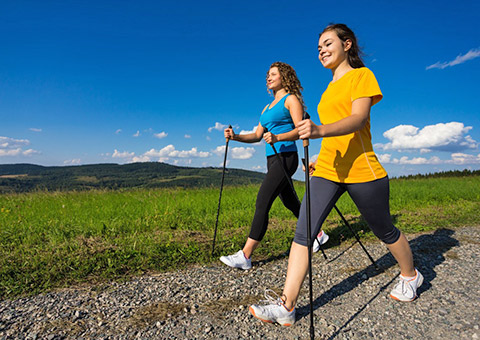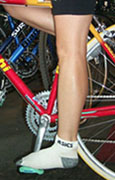Running gear for beginners
One of the advantages running has over other activities is the equipment it takes to get started: not much. In fact, the first couple of times you try it, you don’t even need running shoes.
Don’t stop yourself from running if the opportunity presents itself. But if you decide, ‘Okay, I’m going to start running seriously,’ you have to get running shoes.
For those first couple of runs (assuming you’ve seen a doctor first), a good pair of cross-trainers is fine, but stay away from high tops, which restrict ankle movement, and tennis shoes, which have a lot of lateral support but don’t have the cushioning and stability for running.
Running shoes
If you decide running is for you, a good pair of shoes is the single best investment you can make. The shoe business is a big one, with scores of manufacturers touting their versions of the latest technology (air, gel and so on), designed to provide the best ride and to compensate for our own biomechanical shortcomings.
For a first pair of running shoes, your best bet is to visit a running specialty store. The sales people, probably runners themselves, should be better trained to help you find the right pair of shoes than the staff at a regular sporting-goods store. They can look at the way you stand and run to gauge which type of shoe you need. A decent first pair of running shoes costs $80 to $160. Even the best running shoes can’t protect your body from the jarring effects of concrete, such as sidewalks, so try to stick to trails, tracks and asphalt streets.
Two other items you shouldn’t be without: socks and, for women, a sports bra.
In the sock department, skip the cotton tube socks sitting in your top drawer and splurge on a pair or two of high-tech microfiber socks. Try the shoes and socks on together, as a thick or thin pair of socks can affect the way your shoes fit. Microfibers, with brand names such as CoolMax, Uniqlo AIRism or Nike’s Dri-FIT, use special polyester materials and weaves to help move moisture away from your skin. Cotton socks cause blisters because they retain moisture, and moisture, heat and friction cause blisters.
Sports bras
As for the sports bra, you have two basic options: compression and encapsulation.
- A compression bra, a single piece of fabric across the chest, supports the breasts by keeping them snug against the body.
- An encapsulation bra looks and works more like a regular bra, with two distinct cups, and is recommended for larger-chested women.
The rest of your running outfit is up to you. A T-shirt and shorts or sweats are fine if you’re just starting out. Always dress for the weather, in layers that are easy to remove and tie around your waist should you get too hot. Eventually, you might consider microfiber clothing that does for your body what those special socks do for your feet.





